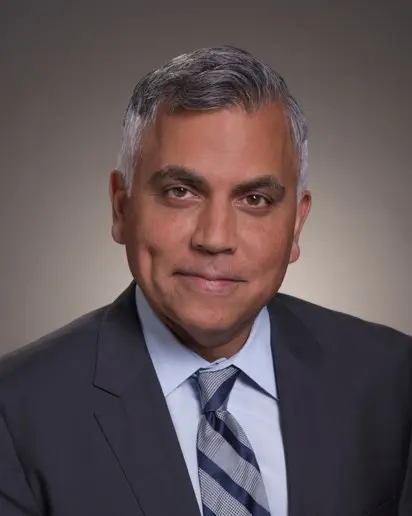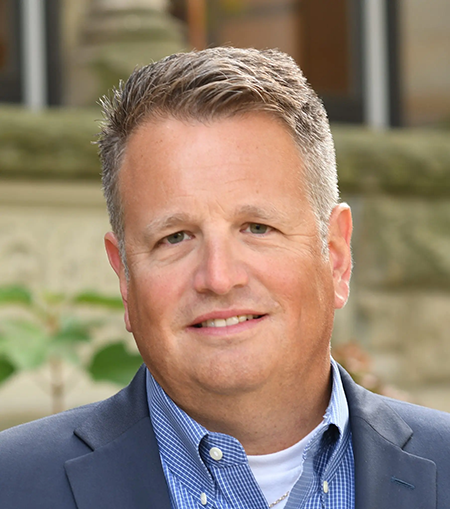
Spotlight on Raj Batra, President, Siemens USA Digital Factory
The Spotlight is on Siemens USA President of Digital Factory. Raj Batra’s vision for the possibilities in manufacturing is crystal clear. He’s passionate about the difference it will make in lives around the world. He knows it’s going to take some risks – but risk taking doesn’t really bother a man who attended middle school in the foothills of the Himalayas, was a boxer, and built a vertical market from nothing to a 9-figure business.
Raj started his career in the automation industry with Rockwell. Recruited by Siemens, when Raj started his career there in 1993, he was one of just two Siemens employees in Michigan. Rockwell employed hundreds of employees in the area at that time. Fast forward to 2016: Detroit is now a center of influence for Siemens Digital Factory. “You have to take a few risks,” Raj says.
Going after the auto market in Detroit in the 1990s might not seem like a risk. But at the time, Siemens was virtually unknown in the US. It was a well-respected company globally, but had not yet made its mark in manufacturing in the US. So when Raj joined Siemens in business development, his new boss told him not even attempt breaking into the automotive market. Rockwell was so heavily embedded in the specifications at the auto plants, it wasn’t worth it. “I’m glad I didn’t heed this advice.”
At first, the auto companies wouldn’t even allow Siemens to bid on a project because they lacked the support, manpower, and infrastructure in the area. After a couple of years of rejection, eventually someone at GM allowed him to bid a small cable and connector project. With their foot in the door at GM, they were able to bid on their first major program, which took months to bid. They lost it. The next major program they bid was a transmission program at GM – and it was the first program they won. From there, they built organically. The automotive industry is now Siemens Digital Factory Division’s largest vertical market. After that experience, “when it’s two people against hundreds, the impossible becomes possible,” Raj said.
After building the auto market starting as an individual contributor, Raj became General Manager of Automotive Markets. From there, he led the team to break into the aerospace industry. They built the Aerospace Center of Competence and started working in the end users at Boeing, Lockheed, and Rolls Royce. From there, he was Vice President and General Manager of Automation and Motion, which encompassed the entire country. In 2007, he became President of the Industry Automation Division. When Siemens reorganized in 2014, his role became President of the Digital Factory Division, where he is now.
In his current role, he enjoys getting out and talking to customers. “It enhances my decision quality. It helps keep things in perspective.” In leading the organization, he views his role as focusing the organization. “Everyone has a positive contribution to make. You empower people to get things done without micromanaging. Then I get out of their way.”
He also enjoys working for an organization that is truly global. Siemens employs around 350,000 people around the world and has been in many countries for over 160 years. “I’ve seen how we are rooted in the culture, the education systems. We are very well integrated with customers around the world. It’s fun to work with a company and really experience that.”
Growing up, Raj wanted to be a fighter pilot, but his mother talked him down from that. Instead, he took his interest in technical things and went for his degree in Electrical Engineering from Lawrence Technical University in Southfield, MI, one of the nation’s best schools for engineering, architecture, science, and applied technology. He always knew he would want to be on the business side of things, but felt it was important to have the technical base. Later, he earned his MBA from the University of Michigan. “Looking back, it was extremely valuable,” Raj said. “To have the technical grounding and now to be able to apply that in a commercial sense to move our products into the market. You just can’t do this unless you have a fundamental understanding of technology.”
Raj gained the foundation for his leadership at a very young age. Both his mother and father grew up in India. His father passed away suddenly from a heart attack when Raj was just 5, and his mother raised him and his older brother. She decided to send them back to India to ensure they got culture and gained independence. They attended a very rigorous boarding school in Mussoorie, India, at the base of the Himalayas. “What started as a horrific situation- moving to a foreign country by ourselves – became one of the best experiences of our lives,” Raj explained. “It shaped a lot of who we are. It taught us how to think and what to value in life: respect for money and leadership, that it is an honor to lead people.”
The brothers would visit family in Delhi and other areas on breaks and during the winter; there was no heat at the school, so everyone had to come down from the hill station when the snow came. His mother would visit once or twice a year. “Mom was here working and using her education to help make sure that everything was set. It was a lot of sacrifice on her part to make sure that she provided as well as she could for the two of us.” Raj lived in India for six years, returning to the U.S. to start high school.

Raj, his brother, and his mother all live in Michigan now. Raj lives in Bloomfield Hills, Michigan with his wife, Shikha, who has a dental practice in town. The two met at an event in Philadelphia while Shikha was working toward her dental degree at Penn. They dated long-distance for five years before they got married and Shikha moved to Michigan. They have three children: two girls, Kareena, 10; Neena, 7; and a boy, Krish, 6. They are busy with soccer, baseball, ice hockey, and gymnastics. “They keep us rockin’ and rollin'”;
Raj enjoys anything that can get him outdoors, including golfing when he has the time. He was a boxer for over ten years, but as he says with a chuckle, “It’s not a sport I can take into my later years.”
His advice for anyone starting out in the industry? “Take some risks. Your greatest opportunities come from when you can take some prudent risks, get outside your comfort zone, and make an impact. That’s important for the people that start their career. [Risk-taking is] something we should encourage people to do, not be so ultra-conservative that people don’t feel the freedom to do that. Even if you don’t accomplish what you wanted to, you pick yourself up and move forward. Failing is part of growing.”
Raj’s Take on Industry 4.0
Siemens is on the cutting edge of advances in technology like Industry 4.0 and IIoT (Industrial Internet of Things). “We have a world-class portfolio of products that lends itself very well to IIoT/ Industry 4.0. Not any company that I know of has this kind of portfolio that can really make a difference.”
Talking to Raj, IIoT and Industry 4.0 quickly cease to be buzzwords. He has a very clear and tangible vision of what these advances will mean for companies and for everyone in our economy.”Once you know what’s possible, you design for it. The internet is accelerating business everywhere. Manufacturing processes are more complex than they ever were. So you need tools to be able to deal with this. With Industry 4.0, we can marry the design of a product with the manufacturability of a product. If you don’t control the design, you can’t control the manufacturing costs effectively.”
His next big challenge is accelerating the rate of adoption of the technology. “A lot of people think that it has to be an enterprise-level roll-out that’s going to be a $100M investment,” Raj says. “But there is a stepwise migration that [companies] can make, taking little steps like advances in automation, or wireless, or Industrial Ethernet backbone for the plant floor. There are a lot of steps that you can take to capitalize on these new technologies. Companies can start to recognize the gains, see reduction in engineering time, and get to market quicker by using these tools to transform their manufacturing processes.”
Read more about Patti Engineering’s Partnership with Siemens
Related categories: Culture


